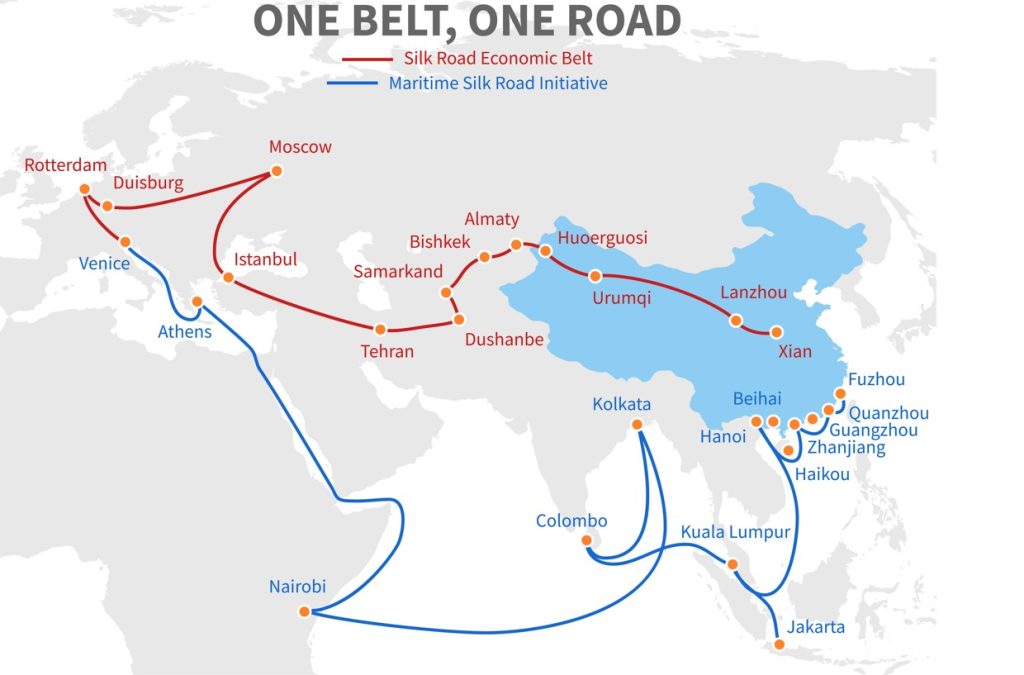Prior to the Third Belt and Road Forum (BRF), which is scheduled to take place in Beijing on October 17–18, 2023, the Chinese Foreign Ministry has been unusually silent about the international leaders who are expected to attend. Although more than 130 world leaders, including heads of international organisations, were confirmed to attend, the post-forum study clarifies Beijing’s reasons for withholding the guest list.
Only twenty-two presidents and prime ministers from different countries attended the forum, out of the 130 world leaders that were originally expected. Even though the number might not seem small at first, it is nothing compared to the levels of participation in China’s first two forums. Thirty international leaders attended the Forum’s first edition in 2017, while 37 attended the 2019 Forum. The third forum carried extra significance because it commemorated the tenth anniversary of Chinese President Xi Jinping’s 2013 announcement of the Belt and Road Initiative (BRI). With significant political capital and personal influence, this endeavour is one of President Xi’s signature initiatives.
Analysing the participation in all three forums in depth reveals some interesting trends. The underrepresentation of European leaders in the latest event is one of the most noticeable tendencies. Ten heads of state or government from Europe attended the Forum in 2017, making up one-third of the total number of attendees. This amount increased to 11 in 2019. But in 2023, there were just three European leaders in attendance: Russian President Vladimir Putin, Serbian President Aleksandar Vucic, and Prime Minister Viktor Orban of Hungary. Notably, leaders that took part in the previous two forums and included Belarus, the Czech Republic, Greece, Italy, and Switzerland were noticeably absent this time.
This reduction in participation from Europe suggests that China is becoming less of an influence in Europe, presumably as a result of its endorsement of Russia’s activities in Ukraine. Other European leaders may not have attended the forum because of Vladimir Putin’s ostentatious presence, who was portrayed as a significant figure by both China and Russia. Recall that during his visit to China in mid-October, EU High Representative for Foreign Policy Josep Borrell took care to avoid conflict with the BRF.
It is apparent that China has not been able to draw in enough leaders from the developing world to make up for the European deficit, even as Europe’s interest in BRI projects has decreased. This implies that China is securing geostrategic influence in developing nations through BRI investments, undermining India’s ambitions to represent the Global South and serving as a geoeconomic instrument as well.
The decline in Southeast Asian involvement is another startling finding. All 11 of the region’s nations, including East Timor, which will join ASEAN in 2025, and the other ten ASEAN members, have committed to BRI projects. But fewer and fewer leaders from Southeast Asia are showing up. Seven regional leaders took part in the first BRF; in 2019, that number rose to nine when Indonesia sent a vice president. Only 50% of ASEAN nations dispatched their heads of state or government in 2023.
There are a number of reasons why leaders from nations like Malaysia, Myanmar, and the Philippines are missing. There was also the negative image of Myanmar’s junta and the country’s protracted civil war. Malaysia’s non-participation is still unclear; however, it may be related to South China Sea conflicts. The Philippines’ non-participation can be linked to tensions with China over the South China Sea.
In Africa, a similar trend was noted, with just five leaders attending the BRF—the same number as in 2019. There is a significant discrepancy between the number of African nations attending BRFs and those taking part in BRI projects.
With the exception of Israel and Jordan, the majority of Middle Eastern nations have welcomed the BRI; nonetheless, there hasn’t been much high-level representation at the BRF. The UAE was the only country to send a high-ranking leader in 2019, but due to unrest in Israel in 2023, it reduced its delegation.
Despite 13 states from Central America and the Caribbean participating in the project, no nation has ever dispatched a head of state or government to a BRF. Only Chile and Argentina competed at the presidential level in South America.
The number of presidents in attendance fell in Central Asia; Kyrgyzstan and Tajikistan were not present, although Uzbekistan and Kazakhstan were. Gurbanguly Berdimuhammedov, Turkmenistan’s former president, served as a stand-in for the country in 2019.
There could be a number of reasons for the lack of several leaders from different areas. For many nations, especially those that are far from China, BRI projects might not be their first priority when it comes to foreign policy. China’s main priorities can potentially be centred on its close neighbours and key allies. Furthermore, leaders’ decisions to skip the BRF may have been affected by urgent domestic concerns and worldwide events.
To sum up, the Third Belt and Road Forum for International Cooperation was not like the other forums; it ended on October 18, 2023. Notably, there was no “Leader’s Roundtable” or joint communiqué. This could have been because other world leaders were reluctant to release a statement alongside Russian President Vladimir Putin, who is accused of war crimes in Ukraine by the ICC. It’s crucial to remember that, despite the decreased turnout, the popularity and influence of the BRI shouldn’t be adversely affected. The decreased leader engagement was influenced by a number of geopolitical and regional variables, and the Chinese leadership will need to deal with a number of challenges going forward.
